How is looking like the health status of forests in the Czech Republic? Forests are going through the initial stages of climate change, and the good health of young stands is promising.
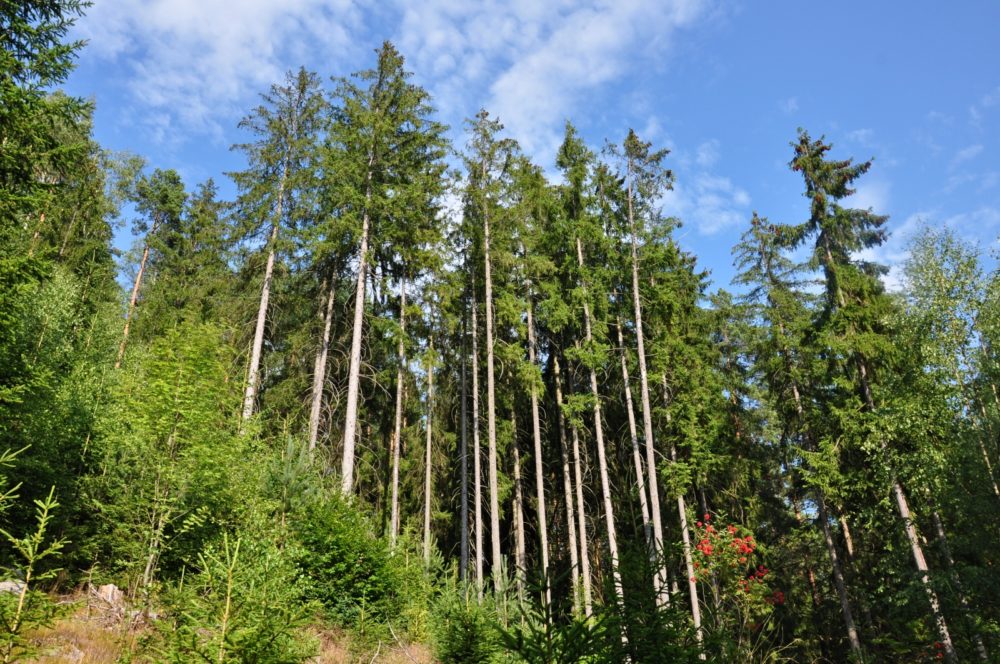 The ICP Forests program is the most widespread source of long-term data on the health of forests in Europe. This program monitors the rate of defoliation (loss of foliage) in a network of 5,500 monitoring plots. The good health status of young forests under the age of 60, is a positive phenomenon for further development in the Czech Republic. On the contrary, a long-term trend of deterioration in the health of pine tree species is evident. The beech stands show the best state of health for a long time, but the state of health of both spruce and oak stands is also relatively stable. However, no data source covers the health status of forests comprehensively. For example, the current bark beetle calamity cannot be captured within the ICP Forests program. For an objective assessment of the state of forest health, it is necessary to combine several information sources.
The ICP Forests program is the most widespread source of long-term data on the health of forests in Europe. This program monitors the rate of defoliation (loss of foliage) in a network of 5,500 monitoring plots. The good health status of young forests under the age of 60, is a positive phenomenon for further development in the Czech Republic. On the contrary, a long-term trend of deterioration in the health of pine tree species is evident. The beech stands show the best state of health for a long time, but the state of health of both spruce and oak stands is also relatively stable. However, no data source covers the health status of forests comprehensively. For example, the current bark beetle calamity cannot be captured within the ICP Forests program. For an objective assessment of the state of forest health, it is necessary to combine several information sources.
How is the health status of forests evaluated?
The health of forests and trees can be evaluated from many perspectives. The health status of trees is indicated by their growth, the content of important substances in the foliage, the color of the crowns, and many other characteristics. In forest ecosystems, the fulfilment of their functions is important. The assessment of foliage loss-defoliation is a method that has significant area coverage and historically long data series.
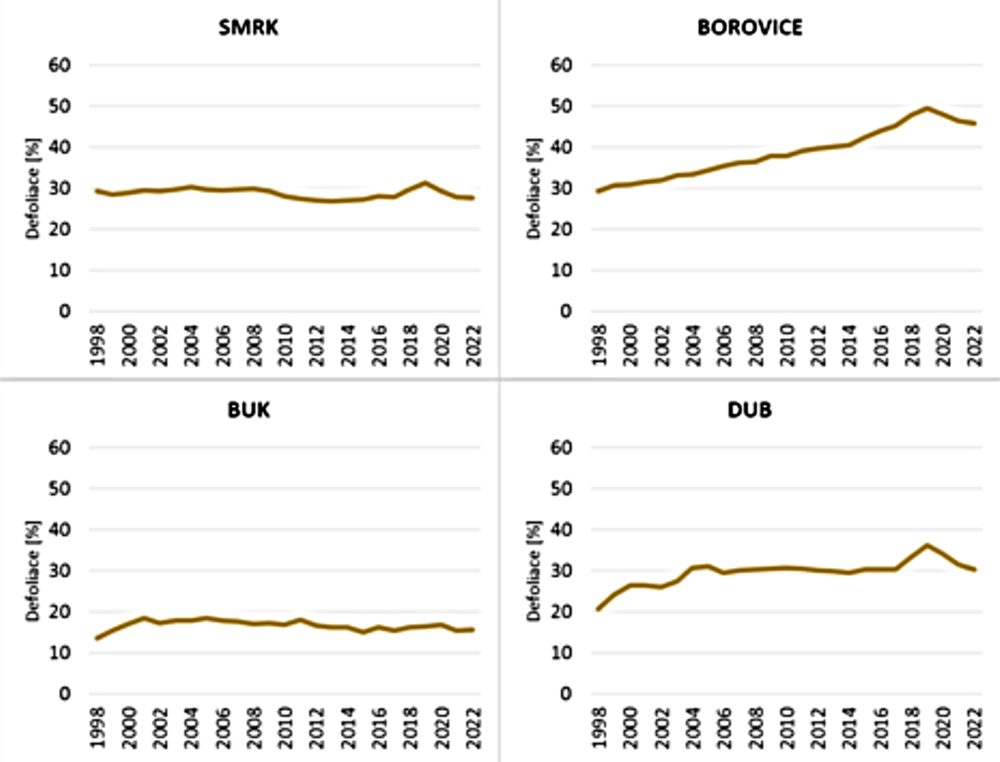 This parameter is monitored in a European network of more than 5,500 monitoring areas by the international cooperative program ICP Forests, which was founded as early as 1986. In the Czech Republic, the Forestry and Game Management Research Institute (hereinafter FGMRI /VÚLHM/) is the guarantor of this program. FGMRI staff evaluates defoliation on more than 300 plots every year. Data from 146 plots are forwarded to the international centre in Eberswalde. Data on the development of the Czech Republic’s state of forest health have been available since 1998.
This parameter is monitored in a European network of more than 5,500 monitoring areas by the international cooperative program ICP Forests, which was founded as early as 1986. In the Czech Republic, the Forestry and Game Management Research Institute (hereinafter FGMRI /VÚLHM/) is the guarantor of this program. FGMRI staff evaluates defoliation on more than 300 plots every year. Data from 146 plots are forwarded to the international centre in Eberswalde. Data on the development of the Czech Republic’s state of forest health have been available since 1998.
Fig. 1: Development of the average defoliation of the main tree species in the Czech Republic (Source: FGMRI /VÚLHM/ – ICP Forests)
The pine forests are withering, the beech stands show the best health.
Health development trends for our main tree species – i.e. for spruce, pine, beech, and oak –can be determined for the Czech Republic from “ICP Forests” data. Of course, other tree species are also monitored, but their number in the areas is not sufficient to be representative of our entire territory.
The average loss of foliage in beech and spruce stands is stable over the long term (Fig. 1). While for beech – which is our “healthiest” tree species from this point of view – it reaches less than 20%, for spruce, it is around 30% in the long term.
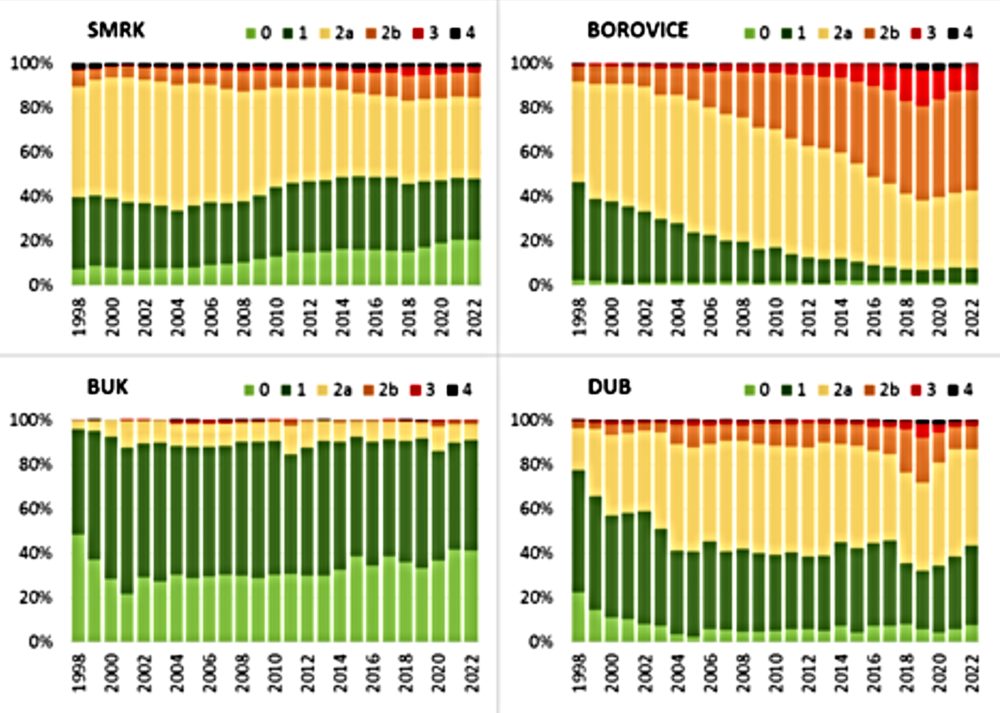 A loss of one-third of the foliage in the case of spruce, which can have nine or more years of needles, does not, however, represent a major threat to the state of health. Only spruces with defoliation above 40% can be considered “damaged”, whose representation has slightly increased in the last decade and now reaches 14% (Fig. 2).
A loss of one-third of the foliage in the case of spruce, which can have nine or more years of needles, does not, however, represent a major threat to the state of health. Only spruces with defoliation above 40% can be considered “damaged”, whose representation has slightly increased in the last decade and now reaches 14% (Fig. 2).
Fig. 2: Development of defoliation classes in our main tree species (Source: FGMRI /VÚLHM/ – ICP Forests); classes: 0 – defoliation 0-10%; 1 – defoliation >10-25%; 2a – defoliation >25-40%; 2b – defoliation >40-60%; 3 – defoliation >60-95%; 4 – dead trees
Defoliation of pine tree species has a significant upward trend. While in the late 1990s, the average was around 30%, as in spruce, in 2022 it was already 46%. As of 2016, more than half of the pine trees fall into the category of impaired health, which is manifested by a loss of foliage exceeding 40%.
The health condition of the oaks has worsened especially at the turn of the millennium, when it increased from values of around 20% to a third loss of leaves. Between 2018 and 2020, oak defoliation temporarily increased due to the overpopulation of the large-headed weevil pest but has now returned to 30%.
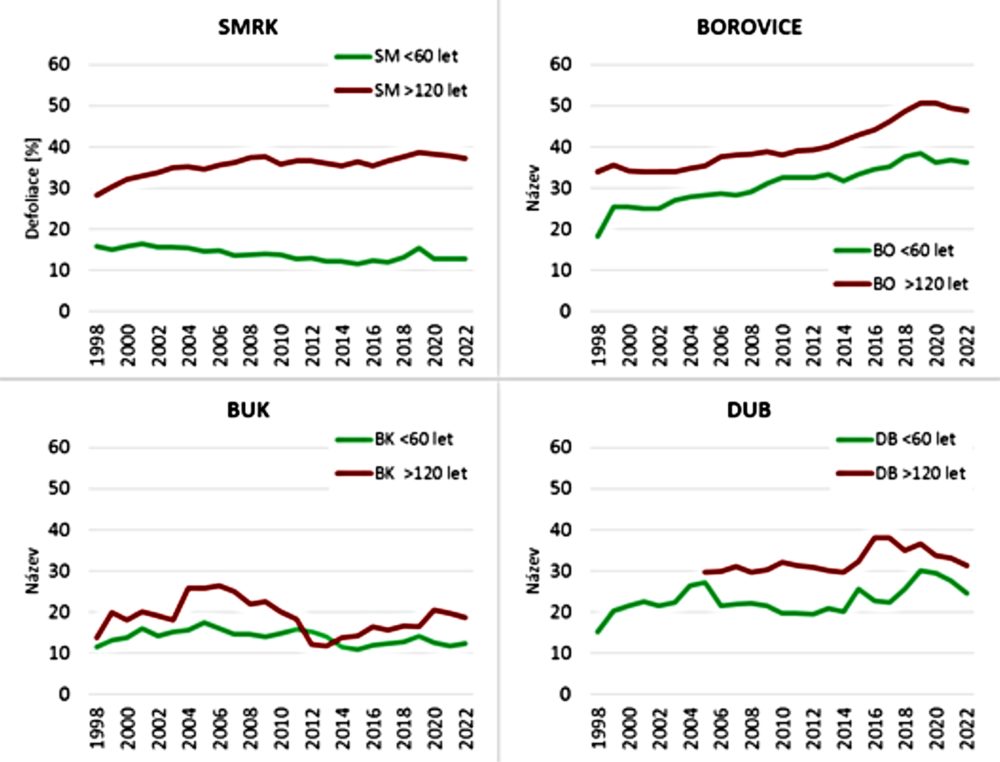 Young trees = healthy trees
Young trees = healthy trees
Hope for the future is represented by the fact that the health status of young trees and stands (up to 60 years of age) is significantly better compared to the average especially compared to trees older than 120 years. (Fig. 3). This is not surprising – this mechanism is the same in all organisms, including humans. Young individuals adapt better to environmental changes, suffer less from diseases and they are generally more resilient.
Fig. 3: Development of the average defoliation of young (<60 years) and old (>120 years) trees in the Czech Republic (Source: FGMRI /VÚLHM/ – ICP Forests)
Part of the problems with the worsening condition of forests, including the current bark beetle calamity, is also related to the fact that the average age of forest stands has been increasing in the last hundred years. Thus, reducing the rotation age of economic forest tree species is one of the important tools for adapting to ongoing climate change.
Of course, the age of the trees cannot be confused with very valuable “old forests” – that is, with forest complexes close to nature, which are located in specially protected areas in our country. These usually include a varied spatial mosaic of trees of different ages and species and are thus close to original primeval forests with high ecological potential.
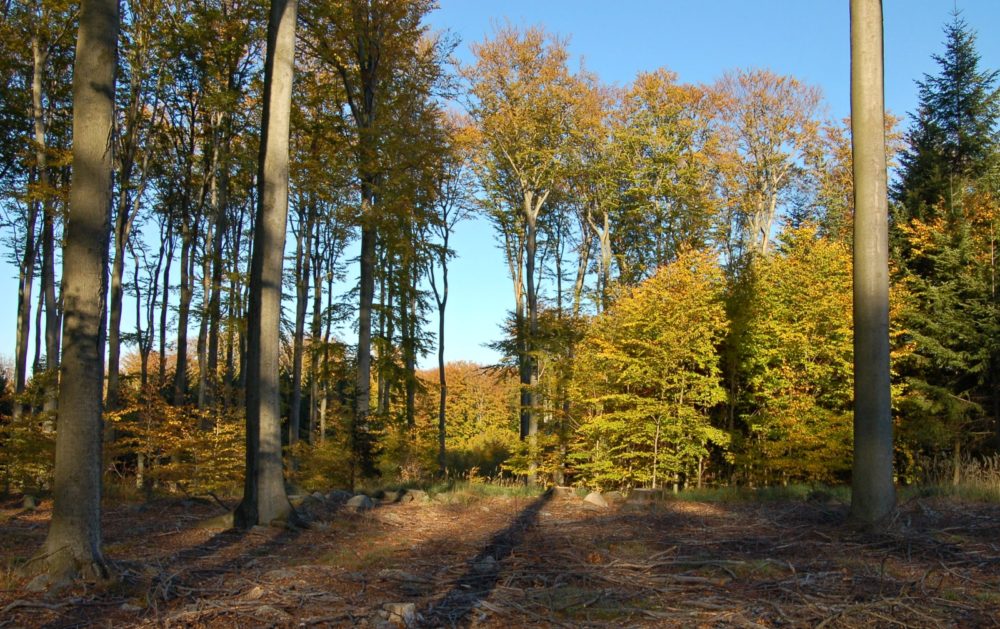 What data will not tell us?
What data will not tell us?
Interpretation of “ICP Forests” results must be approached with caution and context, as with all data sources. For example, it is not appropriate to compare the average categories of health status between individual states, because they include different types of tree species in very different habitats, and even minor methodological deviations in the assessment may be reflected in the comparison.
In the Czech Republic, the development of average spruce defoliation is stable, and from 2019 it is even possible to observe a very slight decrease. But where is it possible to record the consequences of the bark beetle calamity, which decimated spruce stands in northern Moravia, the Bohemian-Moravian Highlands (Českomoravská vrchovina), and other areas in recent years? Unfortunately, ICP Forests monitoring is not able to capture such large disturbances.
Foliage loss can only be assessed for tree species that are present in the monitoring areas. After their removal (felling), they are no longer reflected in the evaluation, and only the remaining trees of other tree species are monitored, or the area falls out of the evaluation completely until a new generation of young forest grows on it.
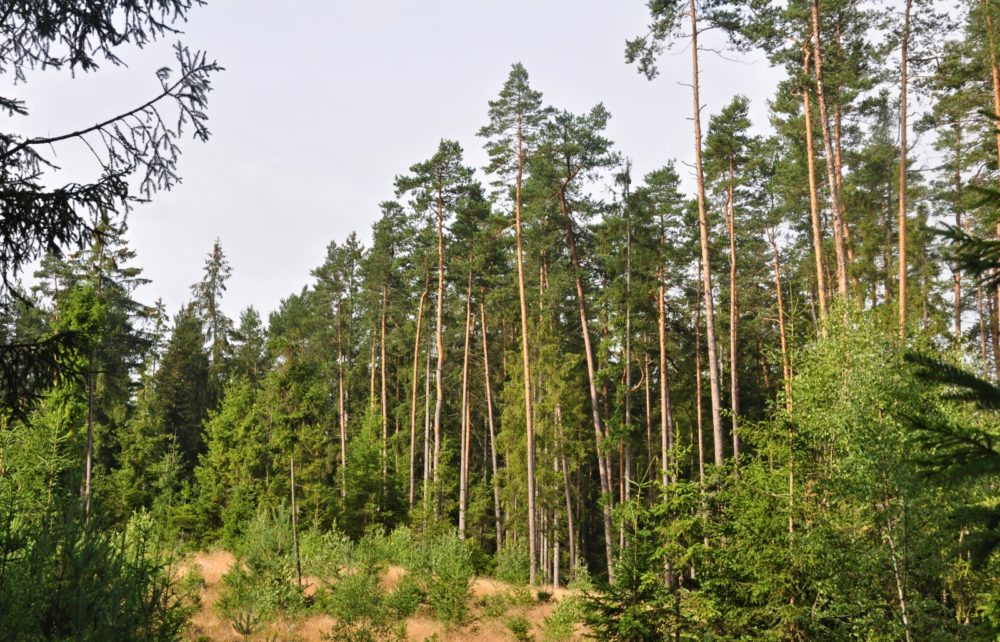 The fact that, while in 2015 over 4,800 spruce individuals were assessed in the FGMRI /VÚLHM/ monitoring trials, in 2021 there were less than 3,200 trees can be a helpful guide. For an objective assessment of the state of forest health, it is, therefore, necessary to combine “ICP Forests” data with other information sources, such as the National Forest Inventory, the results of remote sensing of the country, or data on the occurrence of harmful agents.
The fact that, while in 2015 over 4,800 spruce individuals were assessed in the FGMRI /VÚLHM/ monitoring trials, in 2021 there were less than 3,200 trees can be a helpful guide. For an objective assessment of the state of forest health, it is, therefore, necessary to combine “ICP Forests” data with other information sources, such as the National Forest Inventory, the results of remote sensing of the country, or data on the occurrence of harmful agents.
So, what is the state of forests’ health, and how to deal with this information?
The most important trend, which can be observed this year as well, is the deterioration of the health of pine forests. This tree species shows serious problems in a number of the Czech Republic regions.
Spruce stands do not show worsening defoliation, which largely indicates that even healthy trees are susceptible to attack at high bark beetle incidence. The bark beetle appears to be past its zenith but may return very quickly with repeated warm and dry spring periods.
With a relatively low representation (9.3% of the forest area in 2021), beech shows a relatively very good state of health. However, in the dry periods of 2015, 2018, and 2020, it was possible to observe a deterioration of the condition of beech stands in drying habitats.
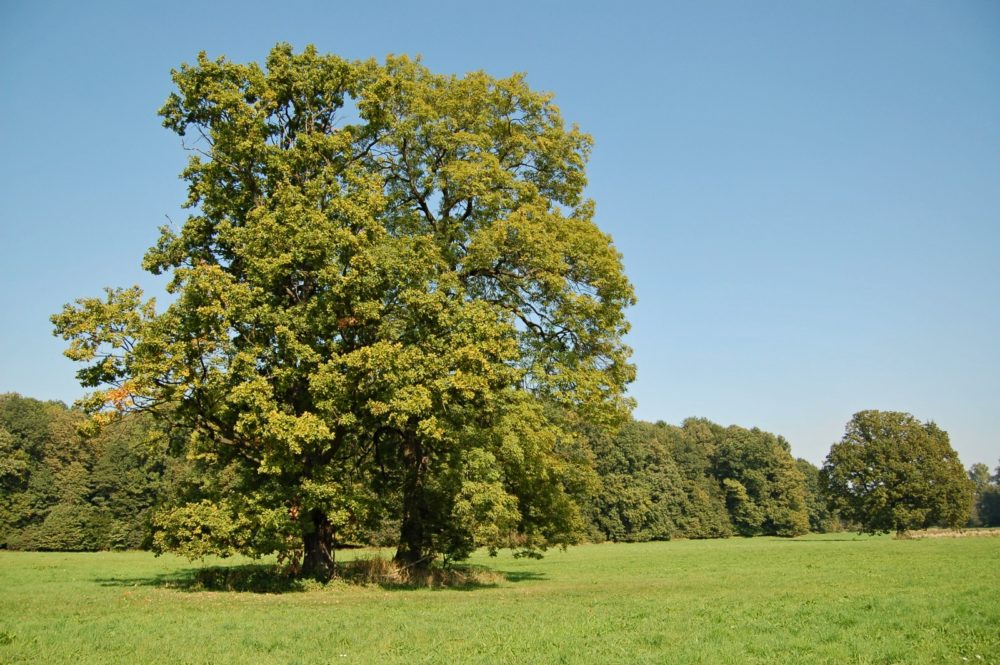 In terms of expected warming, oak is a perspective tree, but its average defoliation is currently similar to that of spruce, however.
In terms of expected warming, oak is a perspective tree, but its average defoliation is currently similar to that of spruce, however.
Global change represents a significant challenge for forests and forestry in Central Europe, both in terms of changing climate characteristics and an increase in meteorological extremes, and in terms of the expected spread of harmful organisms. Currently, there is no ideal tree species or economic method that would guarantee the successful development of new-generation forests for the next hundred years.
“Forestry management today must also use hitherto less represented species, including pioneer tree species, and work carefully with non-native and introduced species to spread the risks. The best option for the future is to grow forests that will be genetically, species-, age-, and spatially diverse and that will create a more varied mosaic of conditions in the landscape than is currently the case. Such forests will adapt more easily to climate change and at the same time enable the fulfilment of the functions and services that the owners and society expect from them”; clarifies Associated Professor Vít Šrámek, the Director of FGMRI /VÚLHM/.
Contact for more information: Associated Professor Vít Šrámek; sramek@vulhm.cz; tel: 602 260 808
